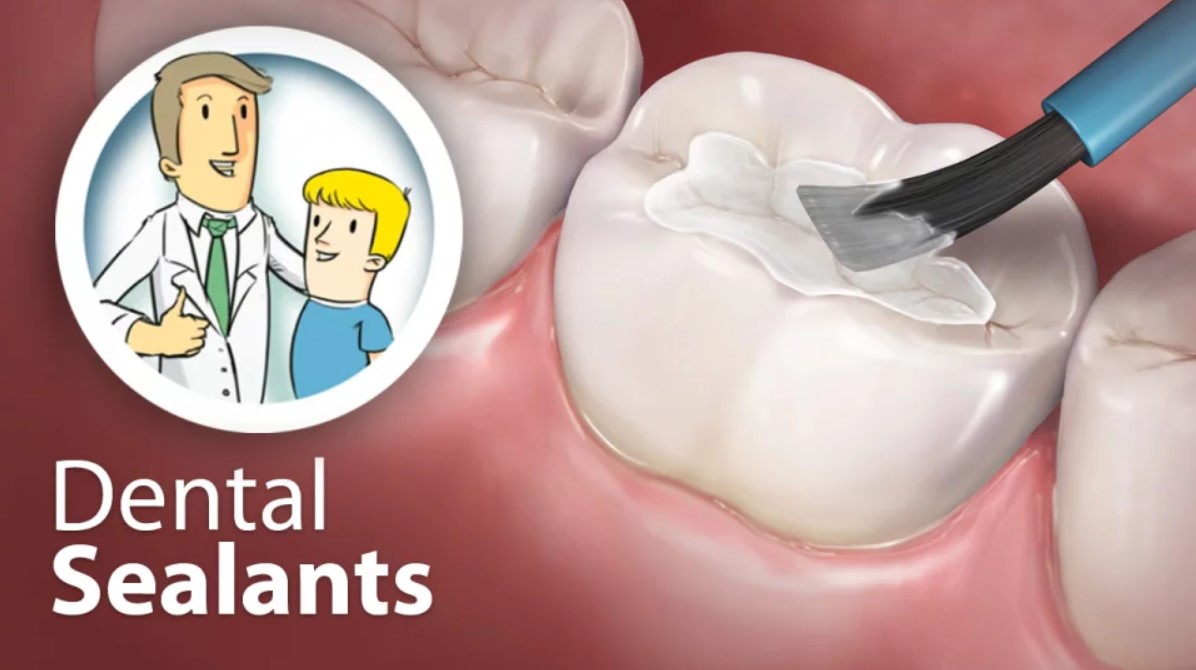Dental sealants

The best ways to help prevent cavities is by flossing and brushing. However, cleaning every cranny and groove in your teeth can be difficult especially the back teeth used for grinding and chewing.
Molars are uneven and rough which makes them hard to clean with a toothbrush. The bristles often glide right over, leaving food debris and decay-causing bacteria sitting on the tooth.
What can be done?
Dental sealant is another safety net that can be used to protect your teeth from tooth decay and cavities.
Cavities are permanent holes on the teeth that can get bigger if they are not treated. They are common in the grooves of the back teeth.
Dental sealants are thin plastic coatings that are placed on the chewing surface of the back teeth to help protect them from decay. These quick and easy, tooth-colored plastic resin coatings will fill those little grooves forming a protective shield over the tooth’s enamel so that bacteria have nowhere to hide.
It is important to note that they are not a way to avoid flossing and brushing but can help prevent cavities from forming or stop early signs of decay from becoming worse.
Dental sealants are placed on the chewing surfaces of the molars and premolars because they have grooves that make them vulnerable to decay. These grooves and fissures can be hard to clean with a normal toothbrush. Plaque accumulates in these areas attacking the enamel causing cavities to develop.
Using toothpaste that has fluoride can help protect teeth from decay but dental sealant provides extra protection for the grooved regions by covering the surface with a protective coating.
Who should get sealants?
Due to the high probability of developing cavities in the back teeth, teenagers and children are ideal candidates for dental sealants.
However, sealants can also benefit adults without fillings or decay.
Typically, you should take your child to get sealants as soon as the permanent premolars and molars come in. By doing this, you protect their teeth from the cavity-prone years (6-14).
How are sealants applied?
Getting sealants is an easy, simple and painless process.
The dentist begins by thoroughly cleaning the teeth that are to be sealed. The teeth are then dried before acid solution is applied on the surface of the teeth. The solution allows the sealant to bond with the tooth.
The dentist will then paint the sealant on in a liquid form that hardens in about a minute. Sometimes with the help of a special curing light that makes it strong.
You may feel the dental sealant with your tongue after it has been placed. However, after a while the teeth feel normal because they are very thin.
How long do sealants last?
Research shows that sealants are effective in helping protect the teeth from decay and cavities by over 70%. Sealants can last for decade. However, regular dental checkups are required to check for chipping.
Bottom Line
It is advisable to tell your dentist to put sealants on your child’s teeth. This is because cavities are the most common chronic condition among teens and children. they can cause infection, pain and severe dental issues if left untreated.
Talk to your dentist today about dental sealants.



